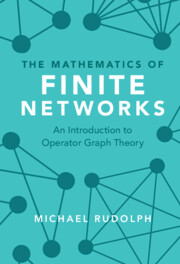5 - Generating Graphs
from Part II - Applications
Published online by Cambridge University Press: 30 April 2022
Summary
The first part of this book led us on a journey from one of the undoubtedly most cherished fields of applied mathematics, classical graph theory, across the ghastly depths of an inherently dynamic formalisation of physical reality in terms of mappings and operators, to an inspired attempt at a fusion of both of these perspectives. With the backing of a conceptional and notational framework at hand, it is now time to put this attempt to a test, as we continue our adventurous journey with an excursion into the endless realm of applications. This second part of our journey will start in this chapter with an exploration of graph generators and their operator graph-theoretical formulation. In this undertaking, we will focus primarily on the generation of random graphs as such models enjoy, in one way or another, widespread and prominent employment throughout almost all fields of science and technology. Only the last section will see the exemplary generation of an exact graph model, the finite square grid graph, as preparation for a closer inspection of an intriguing yet unsolved problem at the very heart of condensed matter physics in the next chapter.
- Type
- Chapter
- Information
- The Mathematics of Finite NetworksAn Introduction to Operator Graph Theory, pp. 181 - 237Publisher: Cambridge University PressPrint publication year: 2022



